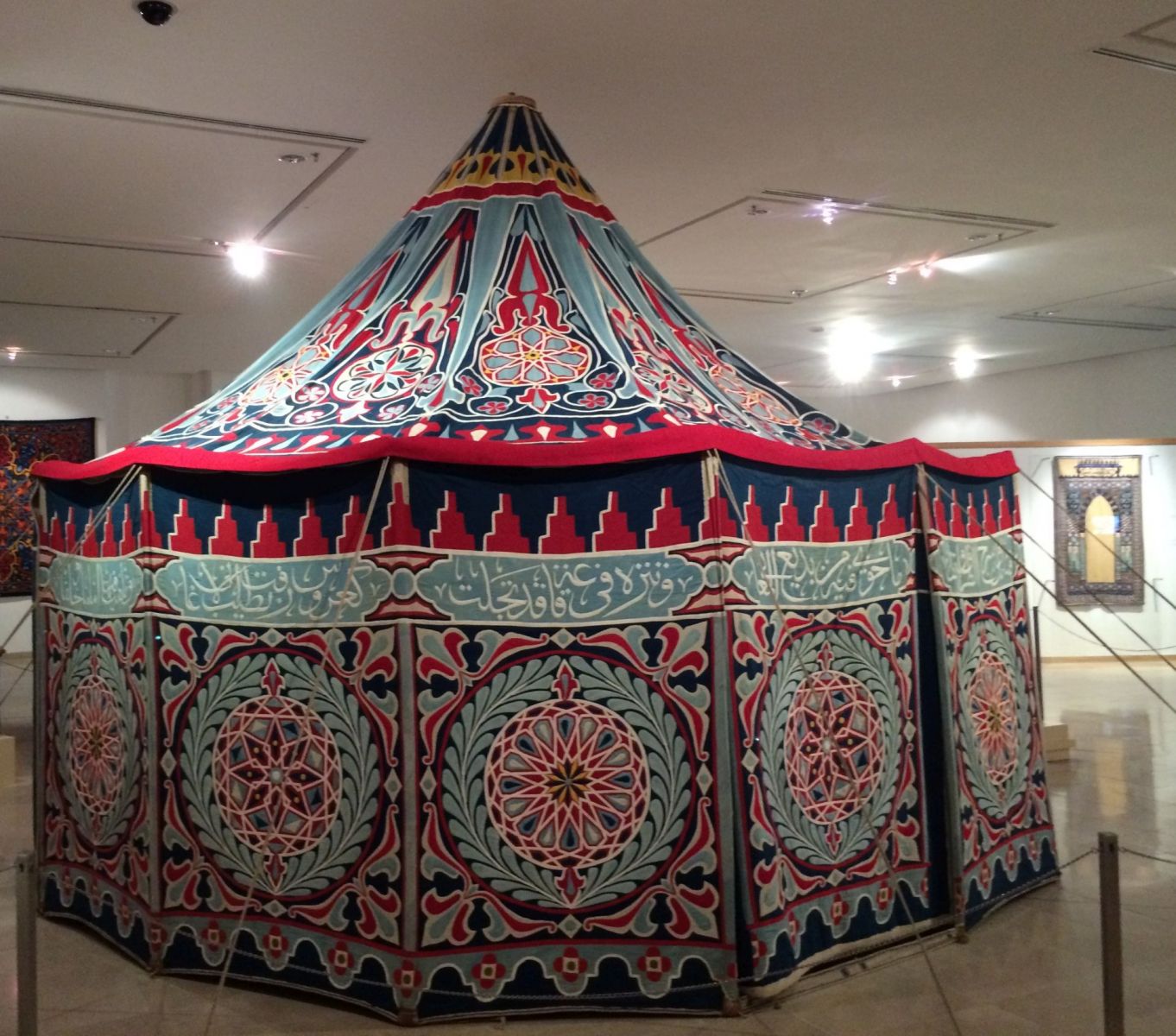 |
To all those who didn’t make it to the curated tour of the exhibition entitled ‘The Tentmakers of Cairo’ – you missed a treat. Fortunately the exhibition continues until 31st January at the Islamic Arts Museum in Jalan Lembah Perdana and we thoroughly recommend you go. How about taking your visitors there? They will love not just the present exhibition, but the whole building which, unlike most museums, is not crowded (by displays or people).
Everything is presented with room for viewers to stand back and admire. Thank you, Michelle for organizing our curator guided tour and thanks to the ladies who guided us: Amira Salleh and Nurul Atikah Lotffi. ‘The Egyptian art of tent-making with whole-room-sized wall-panels stretches back for a thousand years. |
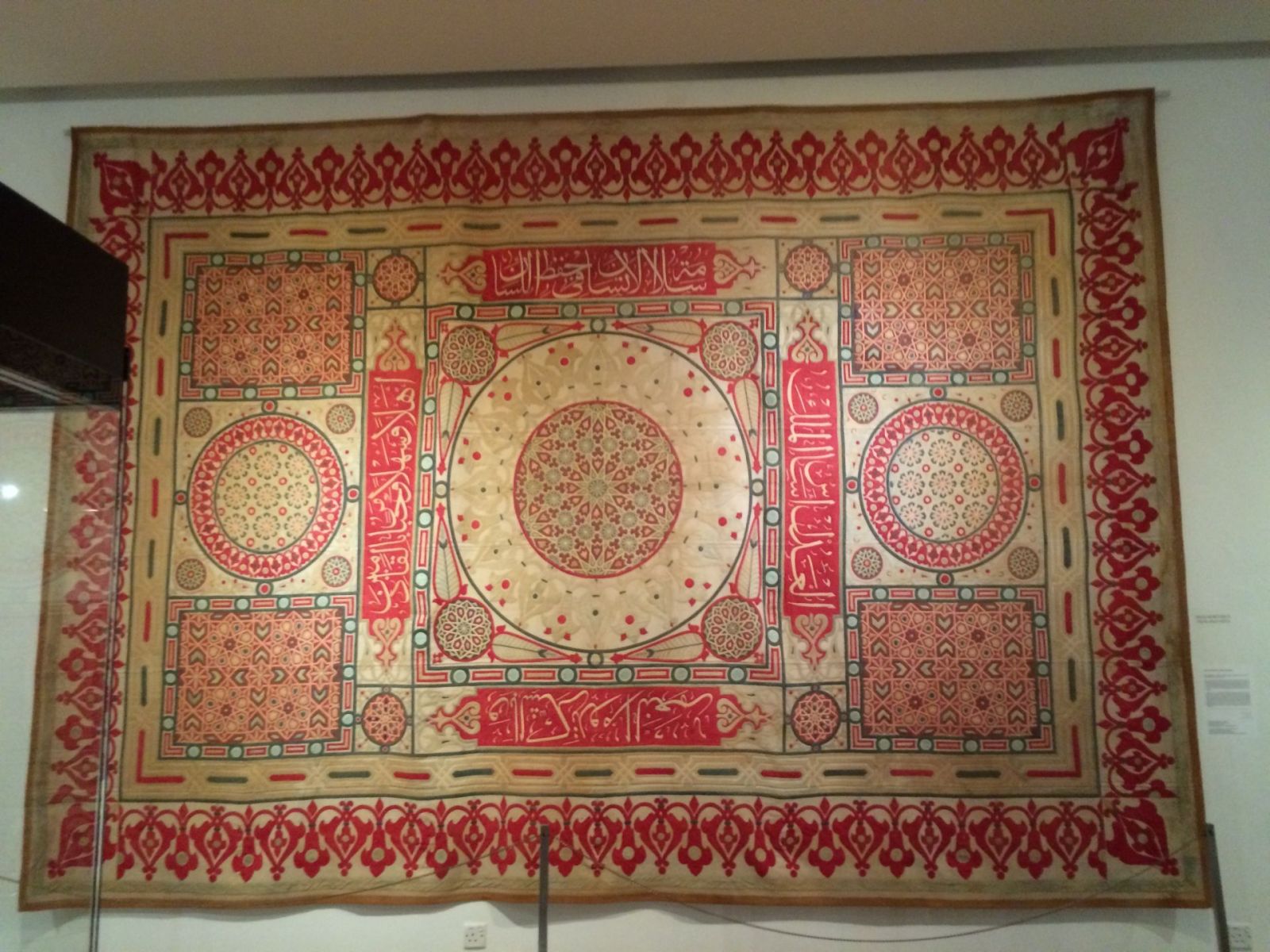 |
We learned that it is mostly men work who work at the hand-applique - as women have other jobs (like cleaning and cooking). The men sit on the floor with their back upright against a wall one leg crossed over the other and cut and stitch these magnificent panels all day. To our amazement, we learned that a tent panel could be produced by hand in two weeks, by one expert. We who listened thought we could not achieve such a piece in more than two years.
The exhibition takes visitors on a journey through the spectacular transformations of khayamiya from the late Ottoman Empire to the present day. |
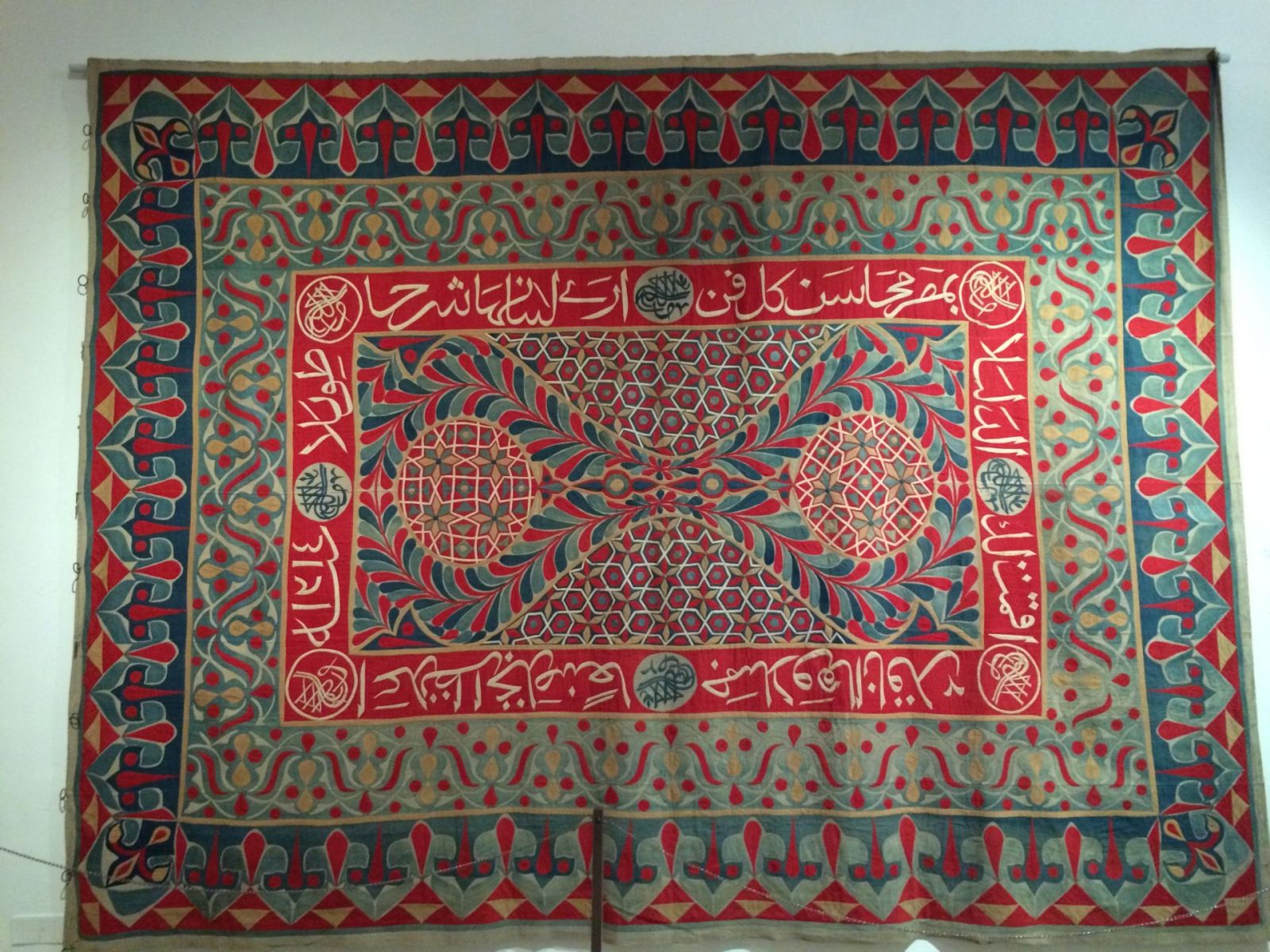 |
Some of the highlights featured include the Syme Panel (the first Khedival khayamiya to be discovered in Australia), and rarely-seen monumental tent panels from the world-leading Bowker Collection.
On display is one of the most treasured objects, a complete 19th-century Egyptian Tent, to demonstrate that khayamiya is a sophisticated textile art form with a rich legacy of Islamic design influences.
As the photos beside each panel tell us, the distinctive hand-applique techniques were developed over many centuries, most notably as spectacular tents and textile panels from the Khedival period (1867-1914). |
|
The textiles are assembled at weddings, funerals, graduations and festivals of all kinds. Once the event is over, they vanish as quickly as they appeared.
The exhibition reveals the history of the rarely seen Khedival Khayamiya and showcases the complexity of this unique art form today. Khayamiya is needle-turned, hand-applique work using only needle, cotton thread, thimble and scissors. It is created by cutting small pieces of fabric folding them to make the required pattern and sewing them on to canvas to create vast walls of colour. This art form is now endangered and the exhibition seeks to establish Khayamiya as a new field for research within Islamic art, and encourage its survival through new audiences.
‘Khayamiya: Khedival to Contemporary’, is a co-operative effort between the Islamic Arts Museum Malaysia and guest curator, Dr Sam Bowker of Charles Sturt University, Australia. We hope there will be many more such co-operations. |
|
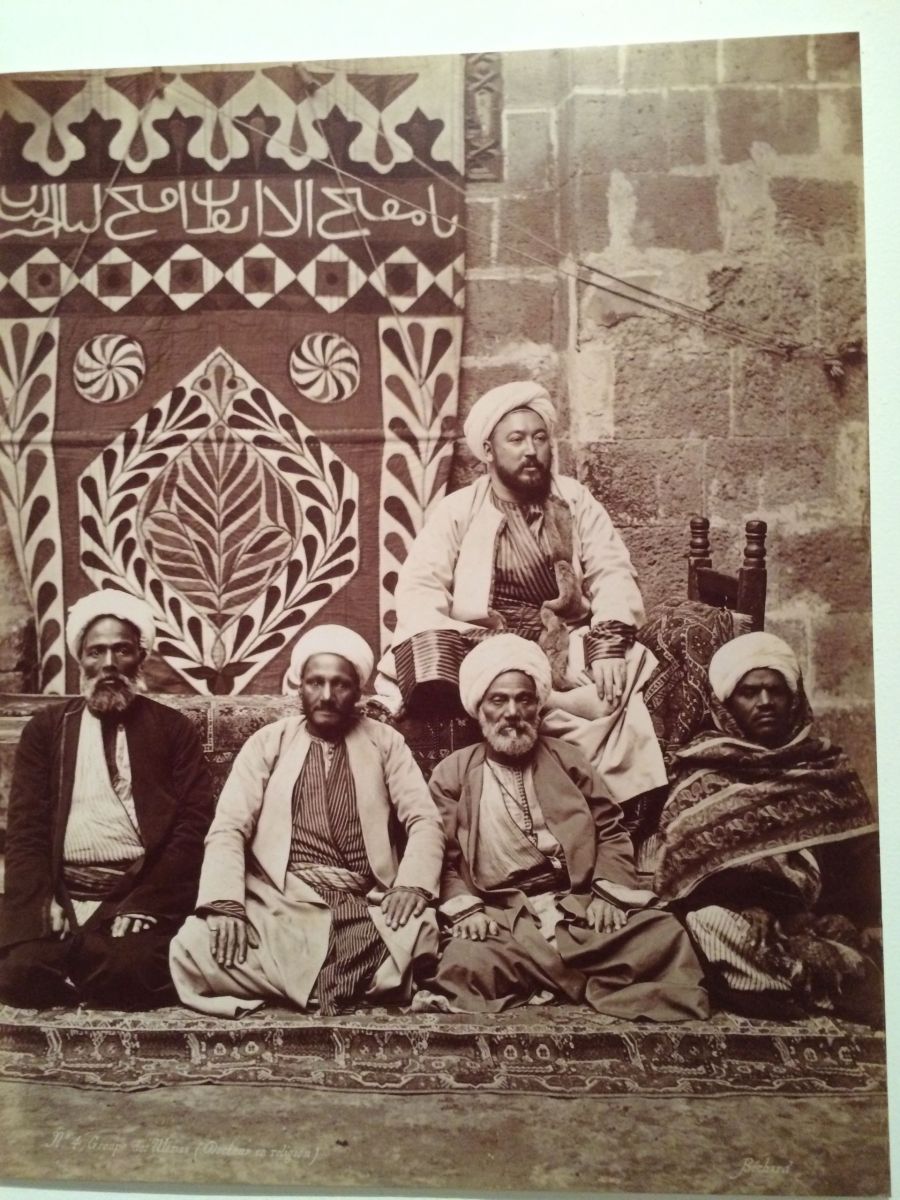 |
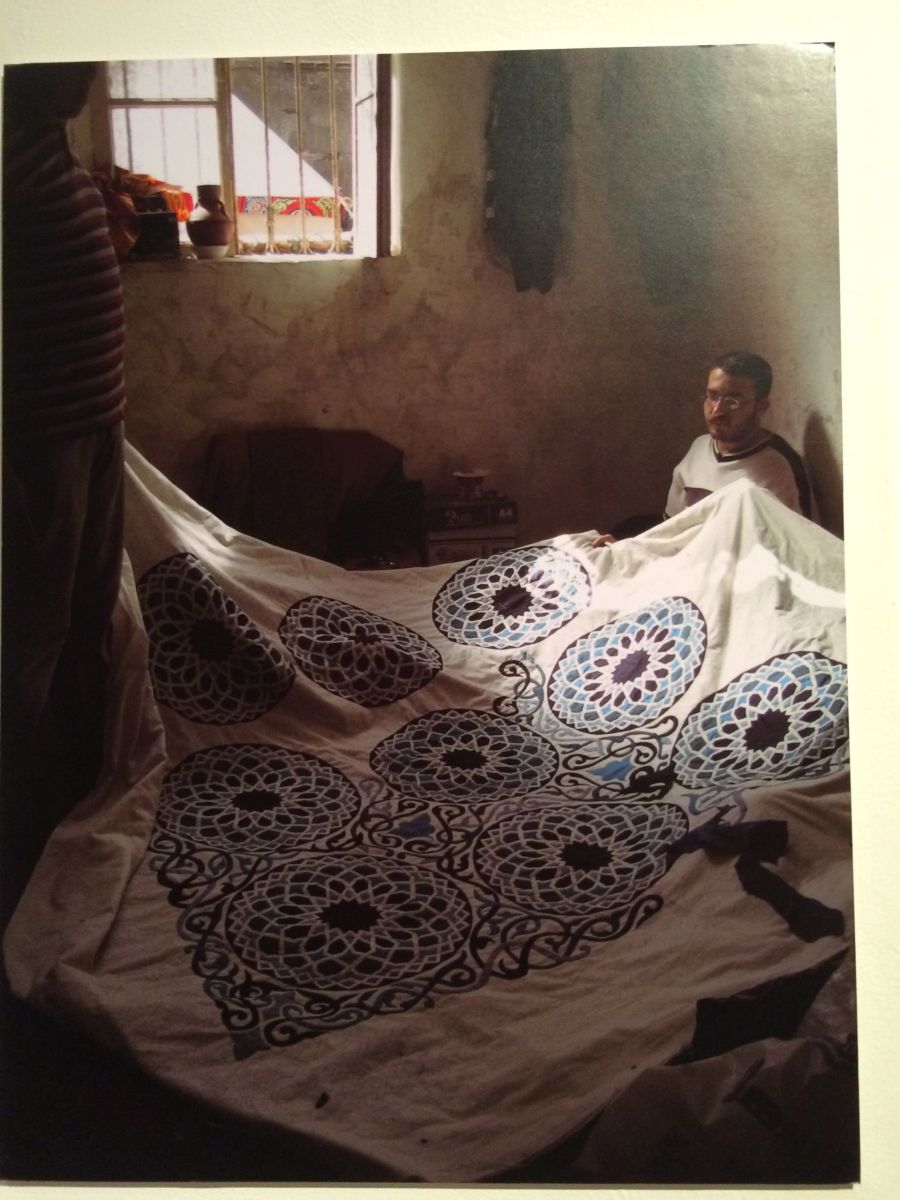 |
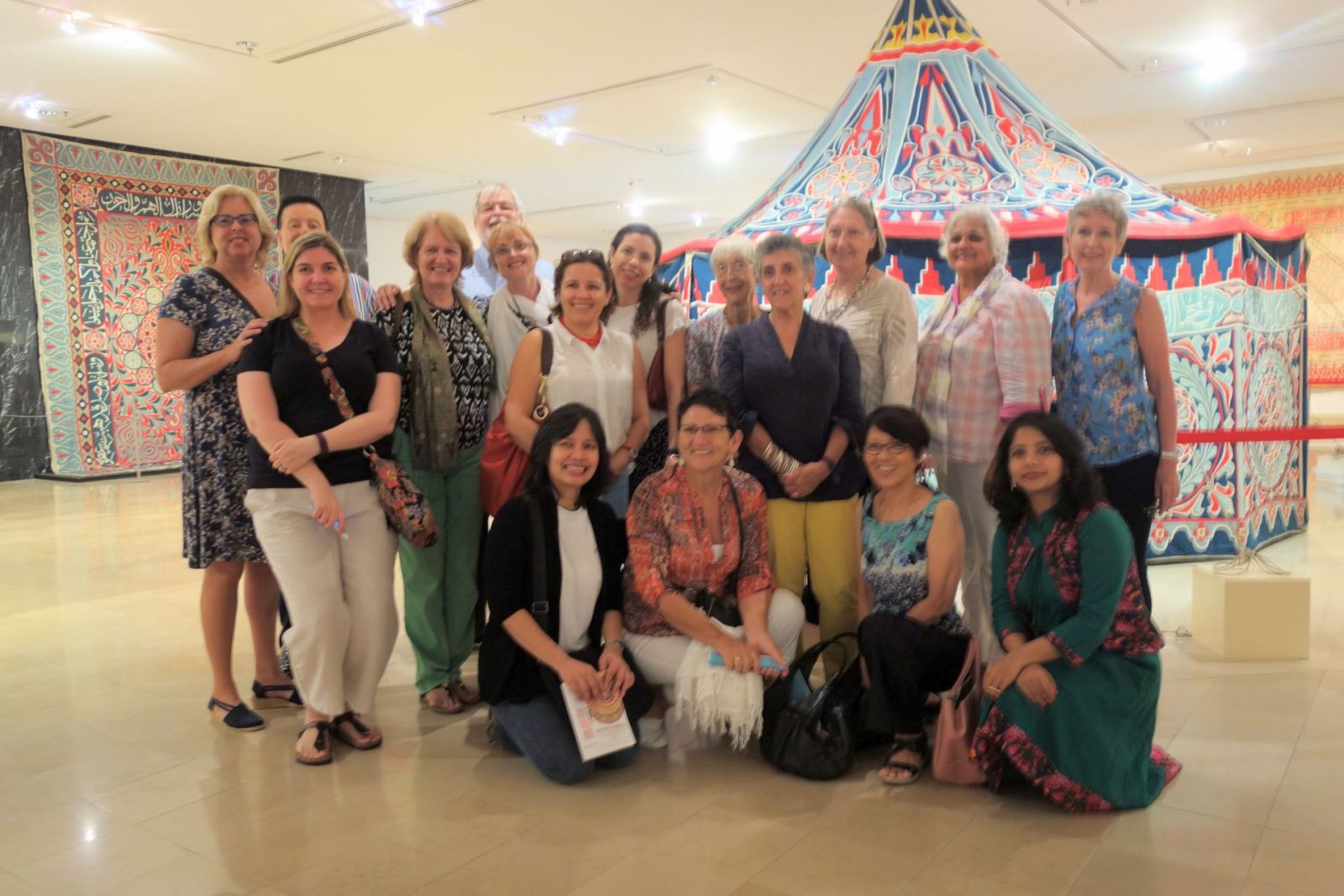 |
|
|
Submitted by Judyth Gregory-Smith |
|




